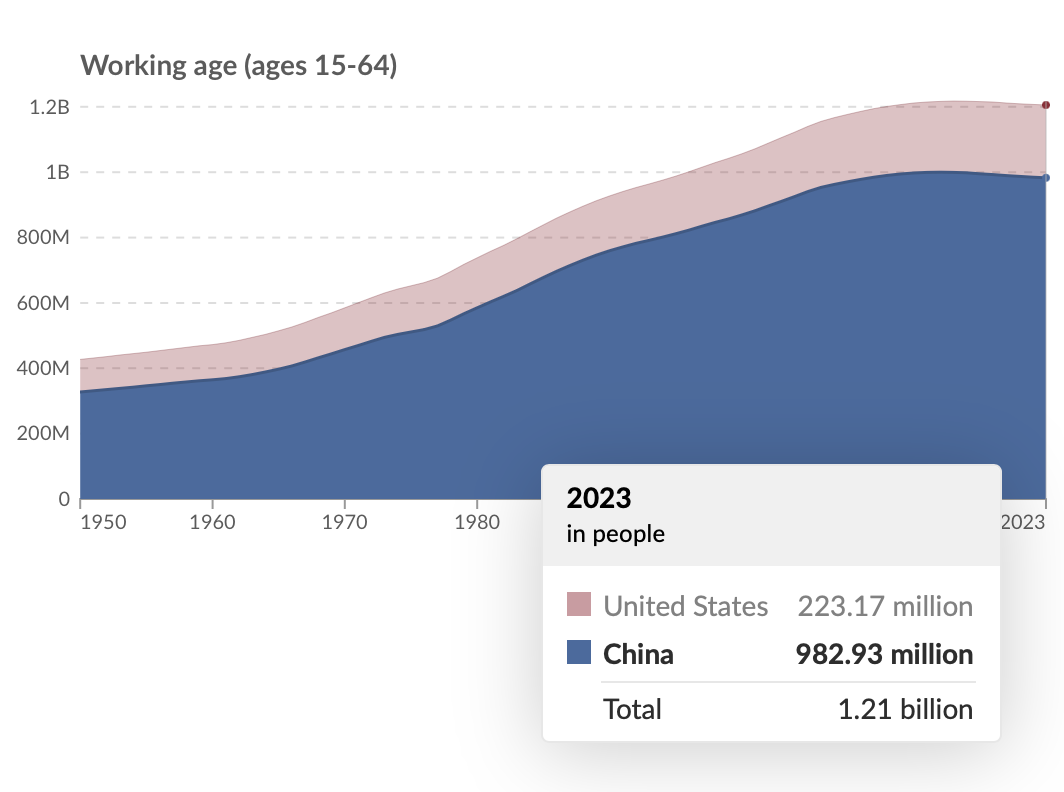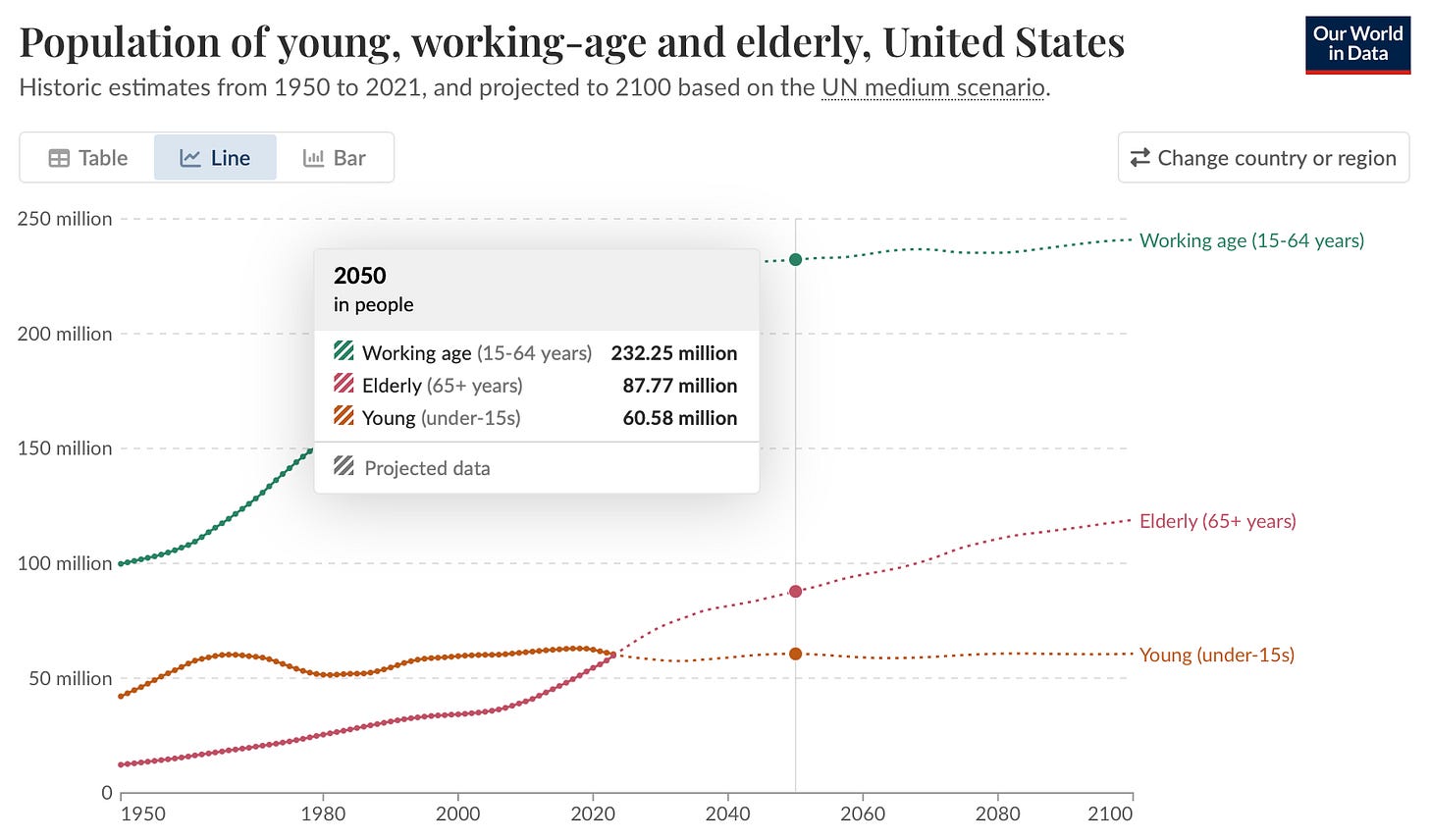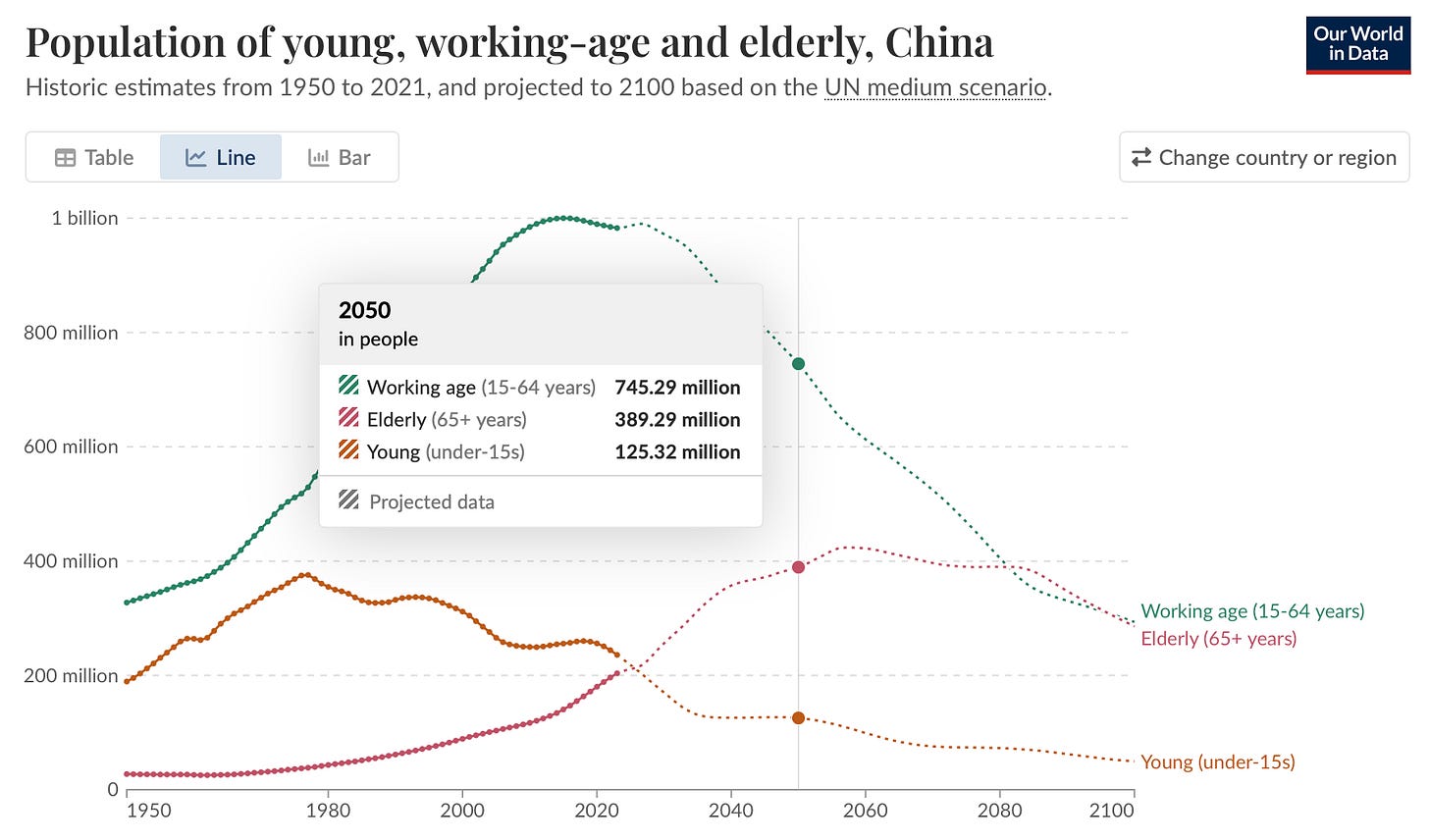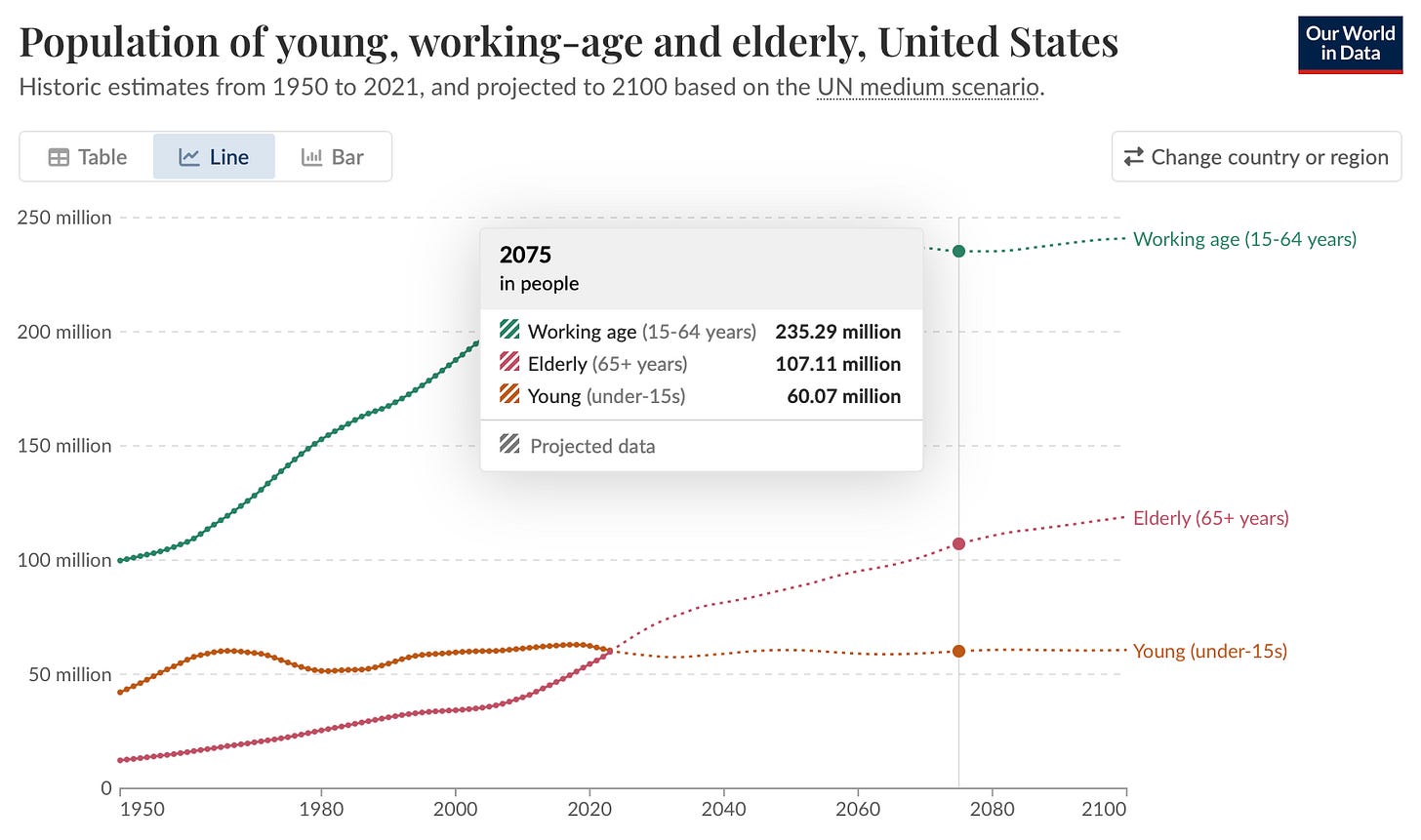China has a major working-age population advantage through at least 2075
Given this advantage, they have a path to dwarf the U.S. economy
In response to “A U.S.-China tech tie is a big win for China because of its population advantage,” I received feedback along the lines of shouldn’t we be looking at China’s working-age population and not their overall population? I was trying to keep it simple in that post, but yes, we should, and when we do, we find, unfortunately, that China’s population advantage still persists. Here’s the data:
Currently, China’s working-age population is over 4 times the U.S.

According to Our World in Data, China’s working-age population is 983 million to the U.S.’s 223 million, or 4.4x.
In 2050, despite being in rapid decline, China’s working-age population is still projected to be over 3 times the U.S.’s


The projections put China’s 2050 working-age population at 745 million to the U.S.’s 232 million, or 3.2x.
In 2075, noting projections are more speculative, China’s working-age population is still projected to be about double the U.S.’s


The projections put China’s 2075 working-age population at 468 million to the U.S.’s 235 million, or 2.0x.
Noah Smith recently delved into this rather deeply in his post “China’s demographics will be fine through mid-century” noting:
China’s economic might is not going to go “poof” and disappear from population aging; in fact, as I’ll explain, it probably won’t suffer significant problems from aging until the second half of this century.
And even in the second half, you can’t count on their demographic decline then either, both because even by 2075 their working-age population is still projected to be double the U.S.’s under current conditions, but also because those conditions are unlikely to hold. As Noah also notes:
Meanwhile, there’s an even greater danger that China’s leaders will panic over the country’s demographics and do something very rash…All in all, the narrative that demographics will tip the balance of economic and geopolitical power away from China in the next few decades seems overblown and unrealistic.
OK, why does this demographic stuff matter again?
Check out my earlier article for details, but here’s a summary.
[A] U.S.-China tech tie is a big win for China because of its population advantage. China doesn’t need to surpass us technologically; it just needs to implement what already exists across its massive workforce. Matching us is enough for its economy to dwarf ours. If per person output were equal today, China’s economy would be over 4× America’s because China’s population is over 4× the U.S. That exact 4× outcome is unlikely given China’s declining population and the time it takes to diffuse technology, but 2 to 3× is not out of the question. China doesn’t even need to match our per-person output: their population will be over 3× ours for decades, so reaching ⅔ would still give them an economy twice our size since 3 × ⅔ = 2.
…With an economy a multiple of the U.S., it’s much easier to outspend us on defense and R&D, since budgets are typically set as a share of GDP.
…What if China then starts vastly outspending us on science and technology and becomes many years ahead of us in future critical technologies, such as artificial superintelligence, energy, quantum computing, humanoid robots, and space technology? That’s what the U.S. was to China just a few decades ago, and China runs five-year plans that prioritize science and technology.
…Our current per person output advantage is not sustainable unless we regain technological dominance.
…[W]e should materially increase effective research funding and focus on our own technology diffusion plans to upgrade our jobs and raise our living standards.

